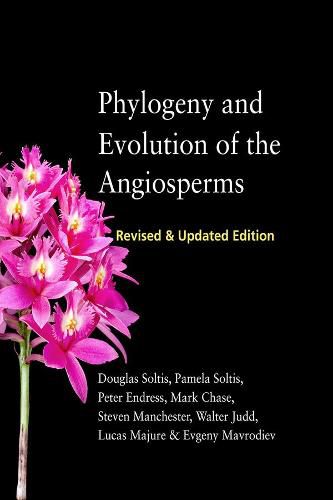Readings Newsletter
Become a Readings Member to make your shopping experience even easier.
Sign in or sign up for free!
You’re not far away from qualifying for FREE standard shipping within Australia
You’ve qualified for FREE standard shipping within Australia
The cart is loading…






Although they are relative latecomers on the evolutionary scene, having emerged only 135-170 million years ago, angiosperms-or flowering plants-are the most diverse and species-rich group of seed-producing land plants, comprising more than 15,000 genera and over 350,000 species. Not only are they a model group for studying the patterns and processes of evolutionary diversification, they also play major roles in our economy, diet, and courtship rituals, producing our fruits, legumes, and grains, not to mention the flowers in our Valentine’s bouquets. They are also crucial ecologically, dominating most terrestrial and some aquatic landscapes.
This fully revised edition of Phylogeny and Evolution of the Angiosperms provides an up-to-date, comprehensive overview of the evolution of and relationships among these vital plants. Incorporating molecular phylogenetics with morphological, chemical, developmental, and paleobotanical data, as well as presenting a more detailed account of early angiosperm fossils and important fossil information for each evolutionary branch of the angiosperms, the new edition integrates fossil evidence into a robust phylogenetic framework. Featuring a wealth of new color images, this highly synthetic work further reevaluates long-held evolutionary hypotheses related to flowering plants and will be an essential reference for botanists, plant systematists, and evolutionary biologists alike.
$9.00 standard shipping within Australia
FREE standard shipping within Australia for orders over $100.00
Express & International shipping calculated at checkout
Although they are relative latecomers on the evolutionary scene, having emerged only 135-170 million years ago, angiosperms-or flowering plants-are the most diverse and species-rich group of seed-producing land plants, comprising more than 15,000 genera and over 350,000 species. Not only are they a model group for studying the patterns and processes of evolutionary diversification, they also play major roles in our economy, diet, and courtship rituals, producing our fruits, legumes, and grains, not to mention the flowers in our Valentine’s bouquets. They are also crucial ecologically, dominating most terrestrial and some aquatic landscapes.
This fully revised edition of Phylogeny and Evolution of the Angiosperms provides an up-to-date, comprehensive overview of the evolution of and relationships among these vital plants. Incorporating molecular phylogenetics with morphological, chemical, developmental, and paleobotanical data, as well as presenting a more detailed account of early angiosperm fossils and important fossil information for each evolutionary branch of the angiosperms, the new edition integrates fossil evidence into a robust phylogenetic framework. Featuring a wealth of new color images, this highly synthetic work further reevaluates long-held evolutionary hypotheses related to flowering plants and will be an essential reference for botanists, plant systematists, and evolutionary biologists alike.